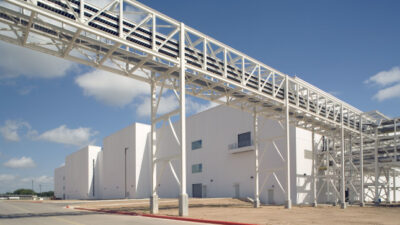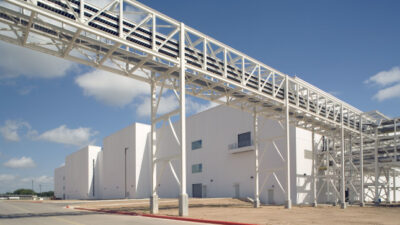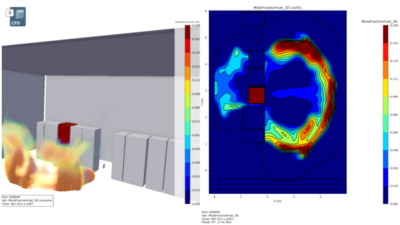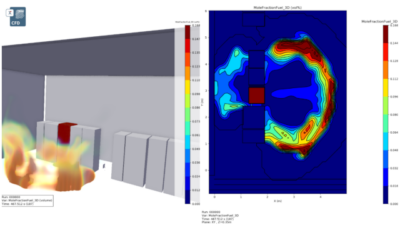President Obama focuses on making American business more energy efficient through ‘Better Building Initiative’, features tax incentives, more financing for retrofits, and innovative clean energy technologies.
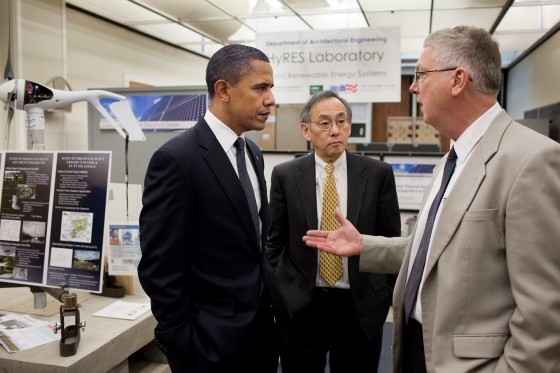
In his State of the Union, President Obama laid out his vision for winning the future by investing in innovative clean energy technologies and doubling the share of electricity from clean energy sources by 2035. Alongside that effort, the President is proposing new efforts to improve energy efficiency in commercial buildings across the country. Last year, commercial buildings consumed roughly 20% of all energy in the U.S. economy. Improving energy efficiency in our buildings can create jobs, save money, reduce our dependence on foreign oil, and make our air cleaner.
The President’s Better Buildings Initiative will make commercial buildings 20 percent more energy efficient over the next decade by catalyzing private sector investment through a series of incentives to upgrade offices, stores, schools and other municipal buildings, universities, hospitals, and other commercial buildings. This initiative builds on our investments through the American Recovery and Reinvestment Act (ARRA), and our continued commitment to passing the President’s proposed “HOMESTAR” legislation to encourage American families to make energy saving upgrades in their homes.
- Achieve a 20 percent improvement in energy efficiency by 2020: Under the President’s plan, by 2020, we will make commercial building space in the United States 20 percent more energy efficient through cost-effective upgrades.
- Reduce companies’ and business owners’ energy bills by about $40 billion per year: By making buildings more energy efficient we will save business owners money by reducing their energy bills by about $40 billion at today’s prices. That money that can be put to better use hiring more workers, inventing new products, and creating shareholder value.
- Save energy by reforming outdated incentives and challenging the private sector to act: The President is calling for an aggressive reform of existing tax and other incentives for commercial building retrofits and proposing a new competitive grant program. In turn, he is asking corporate leaders to commit to making progress toward his energy goals.
The President’s Plan for Better Buildings
The President’s Budget will propose to make American businesses more energy efficient through a series of new initiatives:
- New tax incentives for building efficiency: The President is calling on Congress to redesign the current tax deduction for commercial building upgrades, transforming the current deduction to a credit that is more generous and that will encourage building owners and real estate investment trusts (REITs) to retrofit their properties. These changes could result in a ten-fold increase in commercial retrofit take up, leveraging job- creating investments.
- More financing opportunities for commercial retrofits: Access to financing is an important barrier to increased retrofit investment in some market segments. To address these gaps, the Small Business Administration is working to encourage existing lenders to take advantage of recently increased loan size limits to promote new energy efficiency retrofit loans for small businesses. The President’s Budget will also propose a new pilot program through the Department of Energy to guarantee loans for energy efficiency upgrades at hospitals, schools and other commercial buildings.
- “Race to Green” for state and municipal governments that streamline regulations and attract private investment for retrofit projects: Much of the authority to alter codes, regulations, and performance standards relating to commercial energy efficiency lies in the jurisdiction of states and localities. The President’s Budget will propose new competitive grants to states and/or local governments that streamline standards, encouraging upgrades and attracting private sector investment.
- The Better Buildings Challenge: The President is challenging CEOs and University Presidents to make their organizations leaders in saving energy, which will save them money and improve productivity. Partners will commit to a series of actions to make their facilities more efficient. They will in turn become eligible for benefits including public recognition, technical assistance, and best-practices sharing through a network of peers.
- Training the next generation of commercial building technology workers: Using existing authorities, the Administration is currently working to implement a number of reforms, including improving transparency around energy efficiency performance, launching a Building Construction Technology Extension Partnership modeled on the successful Manufacturing Extension Partnership at Commerce, and providing more workforce training in areas such as energy auditing and building operations.
Building on Progress
The Better Buildings Initiative will complement the initiatives the President has already launched for government and residential buildings, including the $20 billion in funding for building energy efficiency in ARRA:
- Through ARRA investments in programs like the Weatherization Assistance Program, Better Buildings, and the Energy Efficiency and Conservation Block Grant, we will retrofit 600,000 residential homes.
- In last year’s State of the Union, the President called on Congress to pass a package of incentives to encourage Americans to make their homes more energy efficient. We remain committed to the passage of the “HOMESTAR” program.
- The Penn State-led Greater Philadelphia Innovation Cluster is the winner of the federal Energy-Regional Innovation Cluster (E-RIC) competition. The E-RIC competition is a ground-breaking $129.7 million multi-agency grant program that delivers coordinated, targeted grants to spark the growth of innovative, energy-efficient building systems and technologies. This effort involves extensive collaboration across agencies, including Commerce and the Small Business Administration.
- ARRA provided GSA $5.5 billion to improve the energy performance of existing buildings and to start building a new generation of energy efficient buildings.
- The President signed an Executive Order directing federal agencies to achieve zero net energy by 2030 and employ high-performance and sustainable design principles for all new construction and alterations. At least 15 percent of existing buildings need to meet these guiding principles by FY 2015.
– Edited by Gust Gianos, CFE Media, Consulting-Specifying Engineer, www.csemag.com
